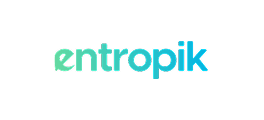The Most Effective Website Project Process for Everything Design
Based on Everything Design's established expertise in B2B branding and extensive industry research, here is the comprehensive process that will ensure the most effective completion of website projects.
Strategic Framework Overview
Everything Design should implement a systematic 10-phase approach that combines proven project management methodologies with specialized branding expertise. This process is designed to deliver websites that not only meet functional requirements but also strengthen brand positioning and drive business results.
Complete Website Project Process Workflow for Everything Design Agency
Phase 1: Project Initiation & Goal Definition
The foundation of every successful website project begins with crystal-clear objective setting. Everything Design should start by conducting comprehensive stakeholder meetings to identify the website's primary purpose - whether it's increasing sales, boosting brand awareness, or building customer loyalty.
Key Activities:
- Define SMART goals (Specific, Measurable, Achievable, Relevant, Time-bound)
- Establish project scope and boundaries
- Identify target audience personas
- Set success metrics and KPIs
- Create initial project timeline and budget parameters
This phase prevents scope creep later in the project and ensures all team members work toward common objectives.
Phase 2: Discovery & Research
The discovery phase involves deep-dive research to understand the client's business, market position, and competitive landscape. Everything Design should utilize their B2B branding expertise to conduct thorough market analysis.
Essential Components:
- Client questionnaire and interviews to gather detailed requirements
- Competitor analysis to identify opportunities for differentiation
- User research through surveys and persona development
- Technical requirements assessment including integrations and functionality needs
- Content audit of existing materials and brand assets
This research-intensive approach ensures the website strategy aligns with broader business objectives and market realities.
Phase 3: Strategy & Planning
With research complete, Everything Design should develop a comprehensive strategy that includes information architecture, content planning, and detailed project roadmaps.
Strategic Deliverables:
- Site architecture and navigation structure with clear user flows
- Content strategy outlining messaging hierarchy and SEO approach
- Technical specifications for development requirements
- Detailed project timeline with milestones and dependencies
- Resource allocation plan matching team expertise to project needs
Everything Design should leverage their branding expertise to ensure the website strategy reinforces the client's brand positioning and messaging framework.
Phase 4: Design Development
The design phase translates strategy into visual concepts, starting with wireframes and progressing to high-fidelity mockups. Given Everything Design's specialization in B2B brands, this phase should emphasize professional aesthetics and conversion optimization.
Design Process:
- Wireframe development showing page layouts and functionality
- Visual branding integration ensuring consistency with brand guidelines
- High-fidelity mockups for desktop and mobile experiences
- Interactive prototypes for complex user interactions
- Client review cycles with structured feedback collection
Everything Design should conduct thorough design reviews to ensure alignment with brand standards and user experience best practices.
Phase 5: Content Creation & Optimization
Content development should run parallel to design refinement, focusing on SEO-optimized copy that reinforces brand messaging. Everything Design's B2B expertise is particularly valuable in creating compelling business-focused content.
Content Deliverables:
- SEO-optimized copy for all website pages
- Brand-aligned messaging that supports positioning strategy
- Visual assets including photography, graphics, and video content
- Technical content such as meta descriptions and alt tags
- Content management guidelines for future updates
Phase 6: Development & Technical Implementation
The development phase brings designs to life through coding and technical implementation. Everything Design should partner with experienced developers or maintain an in-house development team proficient in modern web technologies.
Development Components:
- Front-end development using HTML, CSS, and JavaScript
- Back-end development including server setup and database management
- CMS integration for easy content management
- Third-party integrations such as analytics, CRM, and marketing tools
- Mobile responsiveness ensuring optimal performance across devices
Everything Design should maintain close collaboration between design and development teams to ensure pixel-perfect implementation.
Phase 7: Quality Assurance & Testing
A rigorous QA process is essential for delivering professional results. Everything Design should implement comprehensive testing protocols that cover functionality, performance, and user experience.
QA Checklist:
- Cross-browser compatibility testing across all major browsers
- Mobile responsiveness verification on various devices
- Performance optimization including page load speed testing
- Accessibility compliance ensuring inclusive design
- SEO technical review verifying proper implementation
- Security testing to protect against vulnerabilities
Everything Design should establish standardized quality guidelines that define expectations for all website deliverables.
Phase 8: Client Review & Feedback Integration
The client review phase ensures the final product meets all expectations and requirements. Everything Design should structure this process to gather comprehensive feedback efficiently.
Review Process:
- Staging site presentation for comprehensive client testing
- Structured feedback collection using standardized forms
- Revision management with clear approval workflows
- User acceptance testing to validate functionality
- Final sign-off procedures before launch
Phase 9: Launch & Go-Live
The launch phase requires careful coordination to ensure smooth transition from development to live environment. Everything Design should prepare comprehensive launch checklists and monitoring protocols.
Launch Activities:
- Pre-launch checklist completion covering all technical requirements
- DNS and hosting configuration for optimal performance
- Analytics implementation for performance tracking
- Launch monitoring to identify and resolve any issues quickly
- Client training on website management and updates
Phase 10: Post-Launch Support & Optimization
Successful website projects don't end at launch. Everything Design should provide ongoing support and optimization services to ensure continued success.
Post-Launch Services:
- Performance monitoring using analytics and user feedback
- Regular maintenance including security updates and backups
- Content optimization based on performance data
- Conversion rate optimization through testing and refinement
- Strategic consultation for future enhancements
Project Management Best Practices
To ensure this process runs smoothly, Everything Design should implement these management practices:
Communication Excellence
- Establish regular check-ins with internal teams and clients
- Use project management platforms for centralized communication
- Provide transparent progress reporting with visual dashboards
Resource Optimization
- Implement systematic resource planning to balance workloads
- Build buffer time into timelines to accommodate revisions
- Maintain a talent network for specialized skills when needed
Risk Management
- Identify potential risks early in the planning phase
- Develop contingency plans for common project challenges
- Monitor scope creep through formal change request processes
Client Relationship Management
- Create detailed client onboarding processes that set clear expectations
- Maintain regular stakeholder engagement throughout the project
- Deliver quick wins early to build confidence and momentum
Success Metrics & Optimization
Everything Design should track key performance indicators to continuously improve their website project process:
- Project delivery timelines compared to initial estimates
- Client satisfaction scores through post-project surveys
- Budget adherence and resource utilization efficiency
- Quality metrics including post-launch bug reports and performance scores
- Business impact measurements such as conversion rates and user engagement
This comprehensive process leverages Everything Design's B2B branding expertise while implementing industry best practices for website development. By following this systematic approach, the agency can consistently deliver high-quality websites that not only meet technical requirements but also strengthen their clients' brand positioning and drive measurable business results.
The key to success lies in maintaining discipline throughout each phase while remaining flexible enough to accommodate client needs and market changes. Regular process evaluation and refinement will ensure Everything Design continues to deliver exceptional website projects that exceed client expectations and support long-term business growth.





















